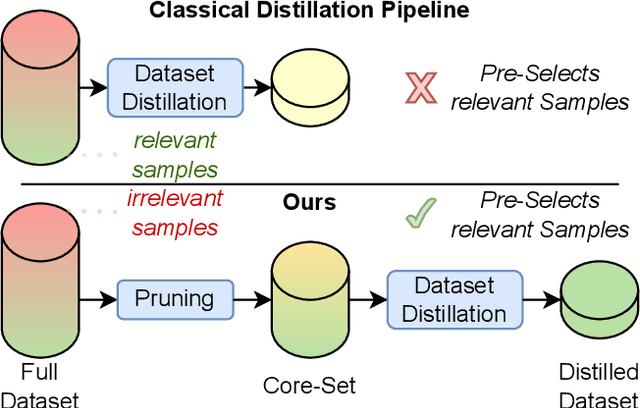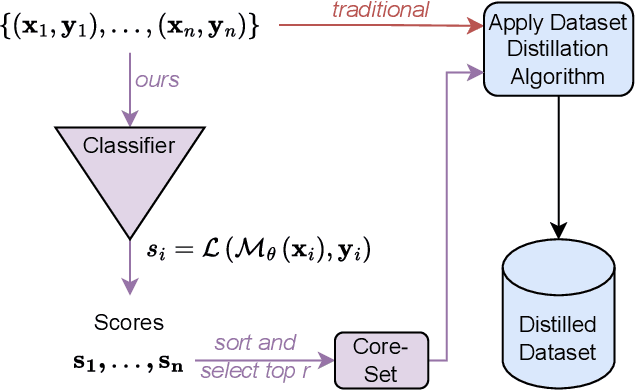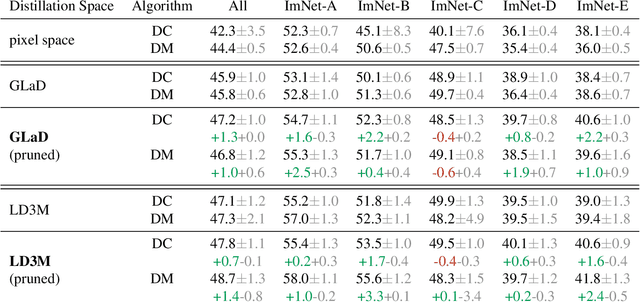Stanislav Frolov
Unifying VXAI: A Systematic Review and Framework for the Evaluation of Explainable AI
Jun 18, 2025Abstract:Modern AI systems frequently rely on opaque black-box models, most notably Deep Neural Networks, whose performance stems from complex architectures with millions of learned parameters. While powerful, their complexity poses a major challenge to trustworthiness, particularly due to a lack of transparency. Explainable AI (XAI) addresses this issue by providing human-understandable explanations of model behavior. However, to ensure their usefulness and trustworthiness, such explanations must be rigorously evaluated. Despite the growing number of XAI methods, the field lacks standardized evaluation protocols and consensus on appropriate metrics. To address this gap, we conduct a systematic literature review following the Preferred Reporting Items for Systematic Reviews and Meta-Analyses (PRISMA) guidelines and introduce a unified framework for the eValuation of XAI (VXAI). We identify 362 relevant publications and aggregate their contributions into 41 functionally similar metric groups. In addition, we propose a three-dimensional categorization scheme spanning explanation type, evaluation contextuality, and explanation quality desiderata. Our framework provides the most comprehensive and structured overview of VXAI to date. It supports systematic metric selection, promotes comparability across methods, and offers a flexible foundation for future extensions.
A Coreset Selection of Coreset Selection Literature: Introduction and Recent Advances
May 23, 2025Abstract:Coreset selection targets the challenge of finding a small, representative subset of a large dataset that preserves essential patterns for effective machine learning. Although several surveys have examined data reduction strategies before, most focus narrowly on either classical geometry-based methods or active learning techniques. In contrast, this survey presents a more comprehensive view by unifying three major lines of coreset research, namely, training-free, training-oriented, and label-free approaches, into a single taxonomy. We present subfields often overlooked by existing work, including submodular formulations, bilevel optimization, and recent progress in pseudo-labeling for unlabeled datasets. Additionally, we examine how pruning strategies influence generalization and neural scaling laws, offering new insights that are absent from prior reviews. Finally, we compare these methods under varying computational, robustness, and performance demands and highlight open challenges, such as robustness, outlier filtering, and adapting coreset selection to foundation models, for future research.
PromptMap: An Alternative Interaction Style for AI-Based Image Generation
Mar 12, 2025Abstract:Recent technological advances popularized the use of image generation among the general public. Crafting effective prompts can, however, be difficult for novice users. To tackle this challenge, we developed PromptMap, a new interaction style for text-to-image AI that allows users to freely explore a vast collection of synthetic prompts through a map-like view with semantic zoom. PromptMap groups images visually by their semantic similarity, allowing users to discover relevant examples. We evaluated PromptMap in a between-subject online study ($n=60$) and a qualitative within-subject study ($n=12$). We found that PromptMap supported users in crafting prompts by providing them with examples. We also demonstrated the feasibility of using LLMs to create vast example collections. Our work contributes a new interaction style that supports users unfamiliar with prompting in achieving a satisfactory image output.
ForAug: Recombining Foregrounds and Backgrounds to Improve Vision Transformer Training with Bias Mitigation
Mar 12, 2025Abstract:Transformers, particularly Vision Transformers (ViTs), have achieved state-of-the-art performance in large-scale image classification. However, they often require large amounts of data and can exhibit biases that limit their robustness and generalizability. This paper introduces ForAug, a novel data augmentation scheme that addresses these challenges and explicitly includes inductive biases, which commonly are part of the neural network architecture, into the training data. ForAug is constructed by using pretrained foundation models to separate and recombine foreground objects with different backgrounds, enabling fine-grained control over image composition during training. It thus increases the data diversity and effective number of training samples. We demonstrate that training on ForNet, the application of ForAug to ImageNet, significantly improves the accuracy of ViTs and other architectures by up to 4.5 percentage points (p.p.) on ImageNet and 7.3 p.p. on downstream tasks. Importantly, ForAug enables novel ways of analyzing model behavior and quantifying biases. Namely, we introduce metrics for background robustness, foreground focus, center bias, and size bias and show that training on ForNet substantially reduces these biases compared to training on ImageNet. In summary, ForAug provides a valuable tool for analyzing and mitigating biases, enabling the development of more robust and reliable computer vision models. Our code and dataset are publicly available at https://github.com/tobna/ForAug.
Spherical Dense Text-to-Image Synthesis
Feb 19, 2025Abstract:Recent advancements in text-to-image (T2I) have improved synthesis results, but challenges remain in layout control and generating omnidirectional panoramic images. Dense T2I (DT2I) and spherical T2I (ST2I) models address these issues, but so far no unified approach exists. Trivial approaches, like prompting a DT2I model to generate panoramas can not generate proper spherical distortions and seamless transitions at the borders. Our work shows that spherical dense text-to-image (SDT2I) can be achieved by integrating training-free DT2I approaches into finetuned panorama models. Specifically, we propose MultiStitchDiffusion (MSTD) and MultiPanFusion (MPF) by integrating MultiDiffusion into StitchDiffusion and PanFusion, respectively. Since no benchmark for SDT2I exists, we further construct Dense-Synthetic-View (DSynView), a new synthetic dataset containing spherical layouts to evaluate our models. Our results show that MSTD outperforms MPF across image quality as well as prompt- and layout adherence. MultiPanFusion generates more diverse images but struggles to synthesize flawless foreground objects. We propose bootstrap-coupling and turning off equirectangular perspective-projection attention in the foreground as an improvement of MPF.
A Study in Dataset Distillation for Image Super-Resolution
Feb 05, 2025



Abstract:Dataset distillation is the concept of condensing large datasets into smaller but highly representative synthetic samples. While previous research has primarily focused on image classification, its application to image Super-Resolution (SR) remains underexplored. This exploratory work studies multiple dataset distillation techniques applied to SR, including pixel- and latent-space approaches under different aspects. Our experiments demonstrate that a 91.12% dataset size reduction can be achieved while maintaining comparable SR performance to the full dataset. We further analyze initialization strategies and distillation methods to optimize memory efficiency and computational costs. Our findings provide new insights into dataset distillation for SR and set the stage for future advancements.
Multi-Label Scene Classification in Remote Sensing Benefits from Image Super-Resolution
Jan 12, 2025



Abstract:Satellite imagery is a cornerstone for numerous Remote Sensing (RS) applications; however, limited spatial resolution frequently hinders the precision of such systems, especially in multi-label scene classification tasks as it requires a higher level of detail and feature differentiation. In this study, we explore the efficacy of image Super-Resolution (SR) as a pre-processing step to enhance the quality of satellite images and thus improve downstream classification performance. We investigate four SR models - SRResNet, HAT, SeeSR, and RealESRGAN - and evaluate their impact on multi-label scene classification across various CNN architectures, including ResNet-50, ResNet-101, ResNet-152, and Inception-v4. Our results show that applying SR significantly improves downstream classification performance across various metrics, demonstrating its ability to preserve spatial details critical for multi-label tasks. Overall, this work offers valuable insights into the selection of SR techniques for multi-label prediction in remote sensing and presents an easy-to-integrate framework to improve existing RS systems.
TKG-DM: Training-free Chroma Key Content Generation Diffusion Model
Nov 23, 2024



Abstract:Diffusion models have enabled the generation of high-quality images with a strong focus on realism and textual fidelity. Yet, large-scale text-to-image models, such as Stable Diffusion, struggle to generate images where foreground objects are placed over a chroma key background, limiting their ability to separate foreground and background elements without fine-tuning. To address this limitation, we present a novel Training-Free Chroma Key Content Generation Diffusion Model (TKG-DM), which optimizes the initial random noise to produce images with foreground objects on a specifiable color background. Our proposed method is the first to explore the manipulation of the color aspects in initial noise for controlled background generation, enabling precise separation of foreground and background without fine-tuning. Extensive experiments demonstrate that our training-free method outperforms existing methods in both qualitative and quantitative evaluations, matching or surpassing fine-tuned models. Finally, we successfully extend it to other tasks (e.g., consistency models and text-to-video), highlighting its transformative potential across various generative applications where independent control of foreground and background is crucial.
Distill the Best, Ignore the Rest: Improving Dataset Distillation with Loss-Value-Based Pruning
Nov 18, 2024



Abstract:Dataset distillation has gained significant interest in recent years, yet existing approaches typically distill from the entire dataset, potentially including non-beneficial samples. We introduce a novel "Prune First, Distill After" framework that systematically prunes datasets via loss-based sampling prior to distillation. By leveraging pruning before classical distillation techniques and generative priors, we create a representative core-set that leads to enhanced generalization for unseen architectures - a significant challenge of current distillation methods. More specifically, our proposed framework significantly boosts distilled quality, achieving up to a 5.2 percentage points accuracy increase even with substantial dataset pruning, i.e., removing 80% of the original dataset prior to distillation. Overall, our experimental results highlight the advantages of our easy-sample prioritization and cross-architecture robustness, paving the way for more effective and high-quality dataset distillation.
Zoomed In, Diffused Out: Towards Local Degradation-Aware Multi-Diffusion for Extreme Image Super-Resolution
Nov 18, 2024



Abstract:Large-scale, pre-trained Text-to-Image (T2I) diffusion models have gained significant popularity in image generation tasks and have shown unexpected potential in image Super-Resolution (SR). However, most existing T2I diffusion models are trained with a resolution limit of 512x512, making scaling beyond this resolution an unresolved but necessary challenge for image SR. In this work, we introduce a novel approach that, for the first time, enables these models to generate 2K, 4K, and even 8K images without any additional training. Our method leverages MultiDiffusion, which distributes the generation across multiple diffusion paths to ensure global coherence at larger scales, and local degradation-aware prompt extraction, which guides the T2I model to reconstruct fine local structures according to its low-resolution input. These innovations unlock higher resolutions, allowing T2I diffusion models to be applied to image SR tasks without limitation on resolution.
 Add to Chrome
Add to Chrome Add to Firefox
Add to Firefox Add to Edge
Add to Edge